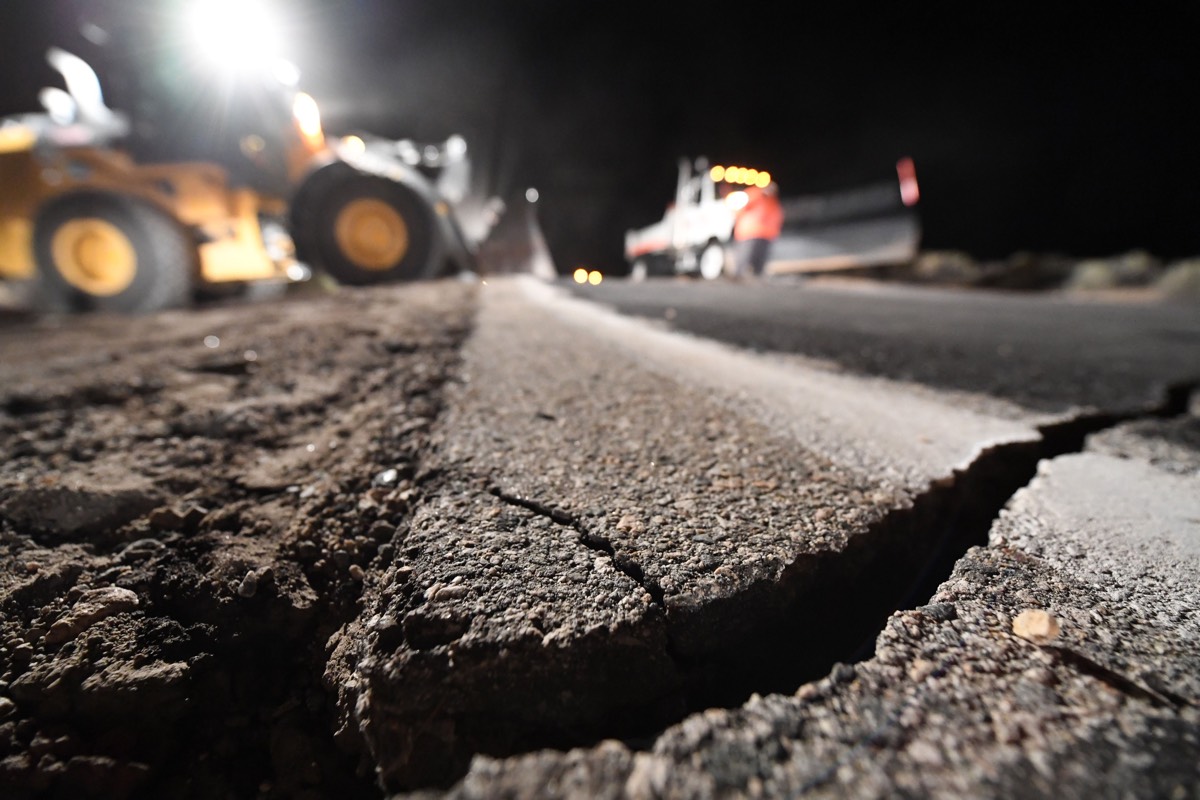SoCal Has An 8% Chance of Another Huge Quake This Week

There's an 8% chance that Southern California could be rocked by another magnitude 6.0 or above earthquake this week, according to seismologists.
The region trembled under the effects of two large quakes last week, one a magnitude 6.4 on July 4 and one a magnitude 7.1 on July 5, both epicentered near Ridgecrest, California. That second temblor demoted the magnitude 6.4 to a mere foreshock. But chances are, the 7.1 magnitude quake is as bad as it's going to get: The U.S. Geological Survey (USGS) estimates a 1% or less chance of a magnitude 7.0 or above quake in the Southern California desert in the coming week or month.
"Most of the earthquakes that are going to happen as we move through time are going to get smaller and less frequent," said Wendy Bohon, a geologist at the Incorporated Research Institutions for Seismology (a university research consortium) in Washington, D.C. [Could Massive SoCal Earthquakes Trigger the 'Big One' on the San Andreas Fault?]
Forecasting aftershocks
No one can predict earthquakes, but scientists can give rough probabilities of aftershocks. The USGS calculates the likelihood of magnitude 3 and above aftershocks for any quake of magnitude 5 or above in the United States and its territories.
The process is not dissimilar to predicting the weather, Bohon told Live Science. Seismologists use observations from past earthquakes and their aftershocks, taking into account the magnitude, or energy released in the quake, and local geophysical patterns. The Eastern California Shear Zone, the region where the recent Ridgecrest quakes hit, is particularly notorious for active aftershocks, Bohon said. More than 3,000 quakes have been recorded since July 4 near the Ridgecrest quake's epicenter, according to the Southern California Earthquake Data Center, but the vast majority have been in the unnoticeable-to-weak magnitude 1 or magnitude 2 range.
Seismologists' predictions are governed by certain scientific laws, like Omori's law, which states that the frequency of aftershocks decreases with time. Then there's the Gutenberg-Richter law, which defines the relationship between larger and smaller quakes. This is the law that states that for every magnitude difference in a quake, there's a tenfold change in frequency. For example, for every 4.0 magnitude quake, there will be 10 magnitude 3.0 quakes and 100 magnitude 2.0 quakes. Both of these laws give scientists a rough pattern to follow when forecasting the aftereffects of an earthquake of any given magnitude.
SoCal quake stats
Southern California's quakes are a result of the movement of the Pacific tectonic plate and the North American tectonic plate against each other; much of this stress occurs on the San Andreas Fault, but about 25% occurs in the Eastern California Shear Zone, Bohon said. This zone is where some of the largest quakes in California's history have occurred, she added. The July 5 magnitude 7.1 quake was the largest in the state since 1999, when the Hector Mine earthquake shook the Mojave Desert area. That quake, also a magnitude 7.1, was epicentered in the Twentynine Palms Marine Corps Base.
Sign up for the Live Science daily newsletter now
Get the world’s most fascinating discoveries delivered straight to your inbox.
As of July 7, the USGS forecasts a 99% chance of magnitude 3 and above earthquakes near the epicenter of the July 5 quake. There is a 56% chance of magnitude 5 and above quakes, and an 8% chance of another quake of magnitude 6 or above. For a quake of magnitude 7 or higher, the probability drops to less than 1% and only rises to 2% over the time frame of a full year.
- The 10 Biggest Earthquakes in History
- Image Gallery: This Millennium's Destructive Earthquakes
- Photo Journal: The Gorgeous San Andreas Fault
Originally published on Live Science.

Stephanie Pappas is a contributing writer for Live Science, covering topics ranging from geoscience to archaeology to the human brain and behavior. She was previously a senior writer for Live Science but is now a freelancer based in Denver, Colorado, and regularly contributes to Scientific American and The Monitor, the monthly magazine of the American Psychological Association. Stephanie received a bachelor's degree in psychology from the University of South Carolina and a graduate certificate in science communication from the University of California, Santa Cruz.









